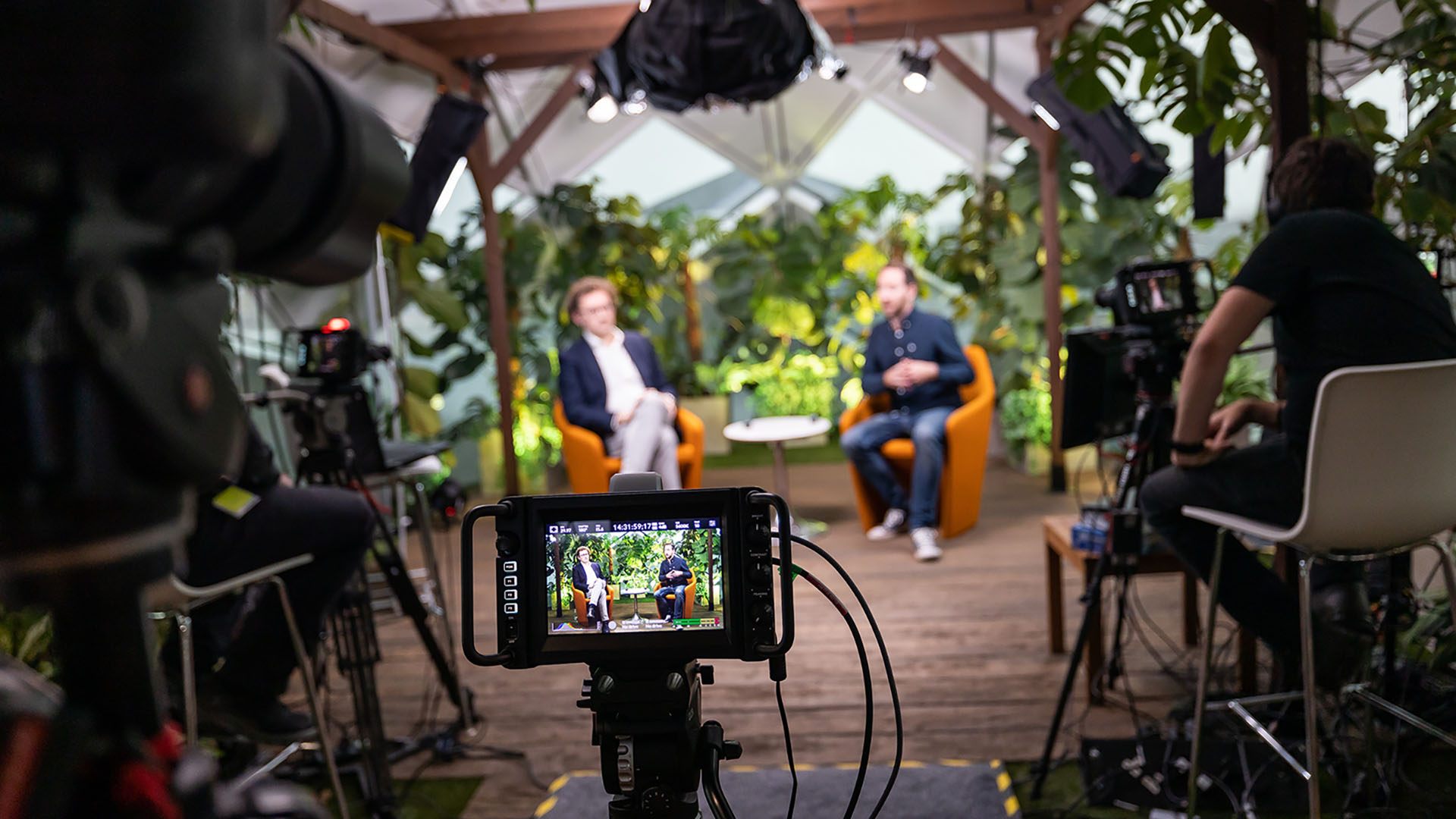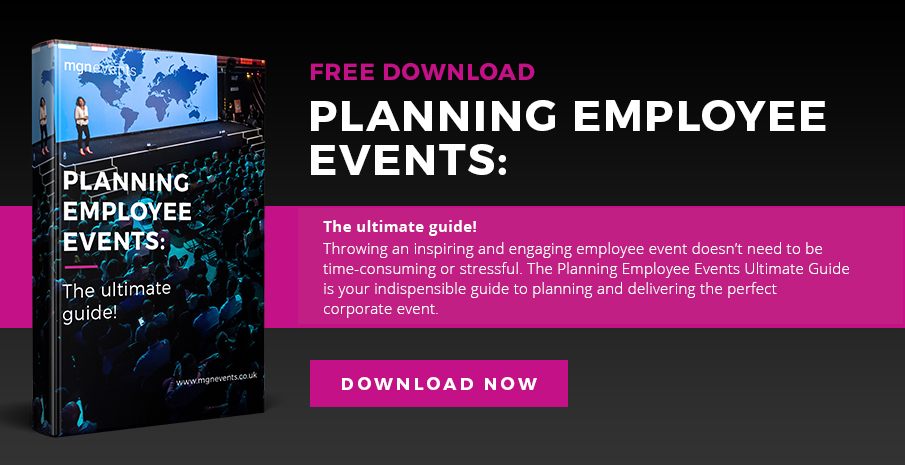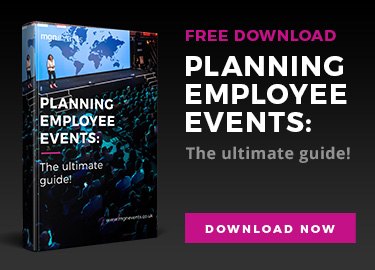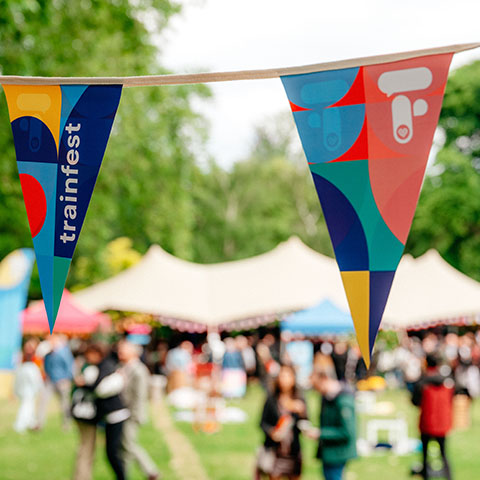A hybrid employee event can help drive staff engagement by catering to the different learning preferences and network personality types of your people. This approach also helps promote a culture of inclusivity and autonomy, where people feel recognised as individuals.
Read time: 5 – 8 minutes
Key takeaways:
— Why good internal event strategists are ditching one-size-fits-all events
— How to build inclusive hybrid events that cater to employee personalities and learning styles
— Example benchmarks for employee engagement return on investment
“We are completely unique as human beings, and no one experiences or interprets the world in the same way,” said Bradley Honnor, founder of MatchFit in a recent HR Grapevine interview. “We could be in the same room and no two people [would] experience it in the same way.”
Passionate about creating sustainable, high performing cultures in organisations, the company applies phenomenological methods — that’s the way we experience things, to you and me — to its successful employee engagement strategies. In this way, MatchFit helps organisations, such as the UK’s Ministry of Justice (MoJ), meet the needs of individuals, because they know that this approach fosters engaged employees and builds inclusive cultures.
Engaged employees are more productive, innovative and less likely to leave their jobs, according to Glassdoor, the online job search and review platform. And, companies with engaged employees outperform those whose employees aren’t engaged by more than 200%.
Given that understanding, why would HR teams, event organisers or internal communications managers have a one-size-fits-all solution for employee engagement? And why would we expect everyone to be comfortable with a single approach to employee events?
Events that help employees feel included and autonomous
Hosting a hybrid employee event caters to individual personalities and learning styles, work-life commitments and geographic locations. Taking a flexible and hybrid approach to internal events also:
Caters to the differences of employee phenomenology – the unique ways people experience things
Gives people choice and autonomy, which supports their happiness, performance and motivation, while contributing to the company’s success
Supports an inclusive culture, which creates a sense of belonging, engagement and connection for employees
Learn more about why hybrid events support employee autonomy and company culture and purpose.
Meeting employees’ networking and learning preferences
While the primary goal for attendees at a virtual employee event is learning, the primary focus at on-line events is networking, according to video platform designer, Kaltura. However, networking always tends to be a part of the event purpose, whether it’s a virtual or an in-person event. The great thing about hybrid events is that it enables people to choose either learning or networking, or both.
Here are some aspects to consider when planning a successful hybrid event that caters to individual personalities and learning preferences:
1. Cater to employee networking strengths
According to Myers-Briggs, when it comes to networking for professional development and growth, some personality types thrive in dynamic settings, while others perform best in one-on-one settings. The four broad categories of employee preferences for networking at internal employee events are:
— Working groups and one-on-one connection opportunities.
— Intimate discussions and online introductions.
— Attending live conferences and free-flowing group meet ups.
— Speed networking at big gatherings or joining a committee.
There are numerous ways you can build on these themes to cater to your employees’ varying networking and collaboration styles:
- Facilitate small group, action-focused exchanges based on knowledge, skill-sharing and specific projects
- Offer one-on-one discussion or ‘speed networking’ opportunities for focused, problem-solving and meaningful interactions
- Include post-panel discussion or roundtable interaction opportunities for question-and-answer (Q&A) session with subject matter experts
- Create opportunities for people to stretch themselves and volunteer to lead or chair a discussion or networking group, or even contribute to the event planning
- Promote casual lunch-time or after-hours social exchanges
- Provide guidance for people to adopt their own spin-off webinar, lunch and learn or question-and-answer session
- Mix and match personality types and networking styles to help people share skills, such as listening, improvisation, and the preparation of talking points
Organiser tip: To work out which types of networking opportunities to plan into your next hybrid event, organisations can gather employee preferences ahead of time and make a point of switching up the options at every event.
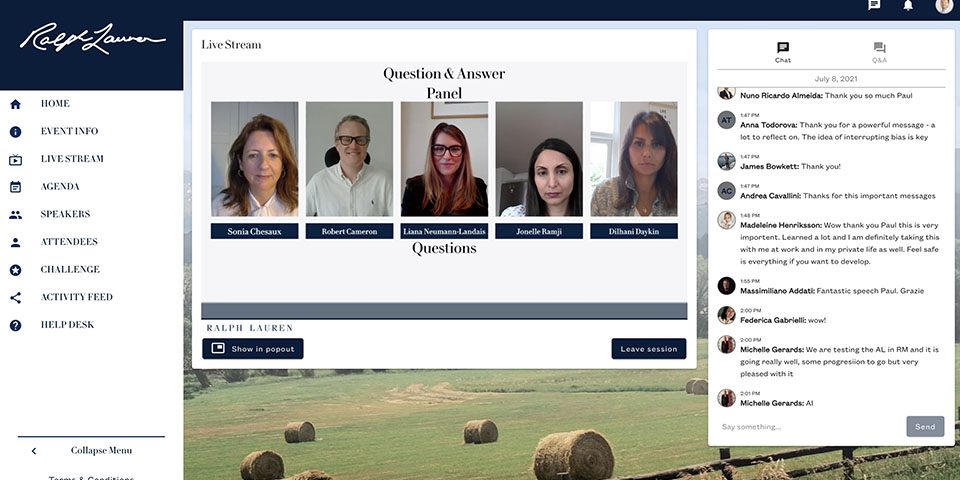
2. Provide for employee learning preferences
There are a variety of learning methods that people respond to and most people benefit from being exposed to a range of techniques. In addition, using different methods can help improve learners’ adaptability. Here are the seven most referenced learning styles, according to people-powered transformation partner, Avado:
Visual learners:
Supposedly retain information best by viewing pictures or images. They tend to use their ‘mind’s eye’ and their problem solving is good for navigation and map reading, for example.
Kinaesthetic learners:
Are all about doing things physically, such as role playing or carrying out a physical action. A good example of a kinaesthetic learner would be a surgeon. rather than listening to an explanation.
Aural learners:
Are people who best retain information after hearing it. They tend to be more in tune with the sounds of their environment than their counterparts, for example.
Social or interpersonal learners:
Work best in groups where there’s a social element and enjoy having a project group or team. These learners are often the most empathetic to the moods, temperaments, motivations and intentions of others.
Solitary or intrapersonal learners:
Prefer to go it alone, making their own notes and reciting them back, for example. They tend to be interested in psychology, philosophy and theology because of their proficiency in self-reflection.
Verbal or linguistic learners:
Respond best to written or spoken words and memorise information through language use, including sign language.
Logical or mathematical learners:
Use logic and structure to learn, such as referencing numbers or statistics. They respond best to work using numbers, structures and reasoning. Engineers, for example, are drawn to structural patterns.
Here are some examples of how to incorporate different methods of sharing knowledge and information at internal employee events:
- Consider using mind maps, a graphical method for capturing, organising and laying out information, ideas or thoughts in an easy-to-recall way. Or include exercises that involve visualising objects from different angles.
- Include some hands-on educational environments where people can apply a principle, technique or theory and carry out an activity for themselves.
- Build in some debates, roundtable discussions, and encourage people to participate in activities, or quiz one another on what they’ve just learned.
- Adopt a storytelling approach to imparting new information, provide reading opportunities and encourage people to take notes, even if you plan to provide supporting materials.
- Construct opportunities for people to categorise or classify abstract patterns or relationships, either individually or in groups.
Organiser tip: For hybrid events to be truly successful, both the virtual and the in-person formats must be equally as rewarding, full of substance and content-rich. Consider pre-recording presentations or videos, and mixing-up your presentation and knowledge-sharing formats. Ask for and track employee feedback and preferences to help ensure you stay in tune with their learning preferences and reasons for attending.
To see a successful employee engagement in action, read our article, ‘Increase staff engagement with a personalised event’.
Conclusion: Personalise the experience to boost engagement at your next employee event
It’s important to recognise that great teams are made up of people with different learning preferences and personality types. Great HR teams, event organisers and internal communications managers understand the need to take a more personalised approach to employee engagement events.
To learn more about the experiences of our customers or for a walk-through of our solutions and services, contact our team via the form below, on 01932 22 33 33 or by email hello@mgnevents.co.uk.
You can also get more help creating a successful internal employee event that supports employee well-being in our 5 step framework for event success.
Further reading:
6 reasons companies should have a hybrid employee event strategy
People-first culture: 5 ways to spark and measure engagement at employee events
Employee engagement: How to motivate staff in a post-pandemic world
8 ways to drive engagement at virtual events
Sources:
https://reba.global/resource/six-ways-to-accelerate-employee-engagement-in-a-hybrid-work-culture.html
https://verilymag.com/2017/09/mbti-myers-briggs-types-of-networking-styles
